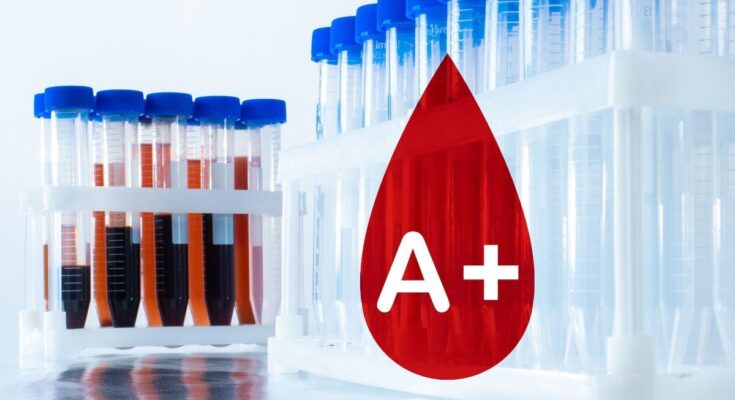Published on
Updated
Blood group A is the most common in Europe. What are its characteristics ? Who should donate blood to based on their Rhesus? Answers from Dr Syria Laperche, medical director of the French Blood Establishment (EFS).
What are the different types of blood groups?
A blood group is determined by the presence or absence of certain antigens on the surface of red blood cells: antigens A and B belonging to the ABO system and antigen D belonging to the Rhesus system. In total, there is more than thirty genetically determined blood systems with more than 350 antigens. The ABO system is the oldest and best known of these. Discovered in 1900 by the American biologist and doctor Karl Landsteiner, this blood system offers four possibilities for expressing antigens: group A, group B, group AB and group O. “In practice, each individual has antibodies against blood groups other than their own. For example, people with blood group A have anti-B antibodies. Those in group B have anti-A antibodies, those in group O have anti-A and anti-B antibodies, and those in group AB have none of these antibodies.details Dr Syria Laperche.
To this ABO system is added the Rhesus (Rh) system. This can be positive or negative. In Europe, 85% of people are Rh positive and 15% Rh negative. Combined with the ABO system, there is therefore eight possible combinations :
- Blood group A negative (A-),
- Blood group A positive (A+),
- Blood group B negative (B-),
- Blood group B positive (B+),
- AB negative blood group (AB-),
- AB positive blood group (AB+),
- Blood group O negative (O-),
- Blood group O positive (O+).
Blood group A+ or A-: what are the differences?
What is special about blood group A+?
“A+ and A- people have the same blood group (A) but not the same rhesus (positive or negative). The red blood cells of A+ subjects are covered with A antigens on their surface. A+ blood can only be transfused 'to individuals from Rh-positive groups A and AB since they do not have anti-A antibodies', indicates the medical director of the EFS.
What is special about blood group A-?
The red blood cells of individuals with blood group A- also have A antigens on their surface. The only difference with blood group A+ is rhesus. An A- person can donate blood to Rh positive or negative people in groups A and AB (A+, A-, AB+, AB-).
Is blood type A rare or common?
According to the French Blood Establishment, group A is the most widespread in Europe (45% of the population). More precisely, group A+ concerns 38% of the population and blood group A- 7%.
O positive, O negative, AB, B…Which blood type is the rarest?
Distribution of blood groups in Europe according to the French Blood Establishment:
- A positive: 38% of the population,
- O positive: 36% of the population
- B positive: 8% of the population.
- A negative: 7% of the population,
- O negative: 6% of the population,
- AB positive: 3% of the population,
- B negative: 1% of the population
- AB negative: 1% of the population.
Group A+ or A-: how and why to know your blood group?
The blood type can be determined at birth, in which case it appears on the health record. If the test has not been carried out or the blood group card has been lost, simply take a blood test. Blood group determination is systematically carried out at the start of pregnancy to ensure that there is no rhesus incompatibility between the mother and the fetus.
“Rhesus incompatibility could be life-threatening for the latter,” warns Dr. Syria Laperche. Blood grouping can also be carried out during a planned or urgent surgery. Finally, during a don de sangblood grouping is carried out in order to know the blood group of the donor, and then avoid any problem of blood incompatibility at the time of the transfusion. “If we transfuse a group A person with group B blood, the antibodies present will destroy the red blood cells that are transfused. This would lead to a worsening of the patient's condition (risk of hemolytic shock and death). The role of these antibodies is very important”, underlines the medical director of the EFS.
However, in the event of a life-threatening emergency with massive hemorrhages, group O- can be transfused to any recipient because it does not present antibodies on the surface of its red blood cells. However, in the majority of cases, recipients are transfused with blood from a donor of their own blood type.
What is the best blood type? Which one is universal donor?
There is no such thing as a “better” blood group than the others; it is purely a genetic coincidence. However, group O, which does not have any antigen on the surface of its red blood cells, has the advantage of being able to give to all other blood groups, regardless of rhesus. Group O individuals are considered universal donors if they are Rh negative. People in group AB are considered universal recipients.




